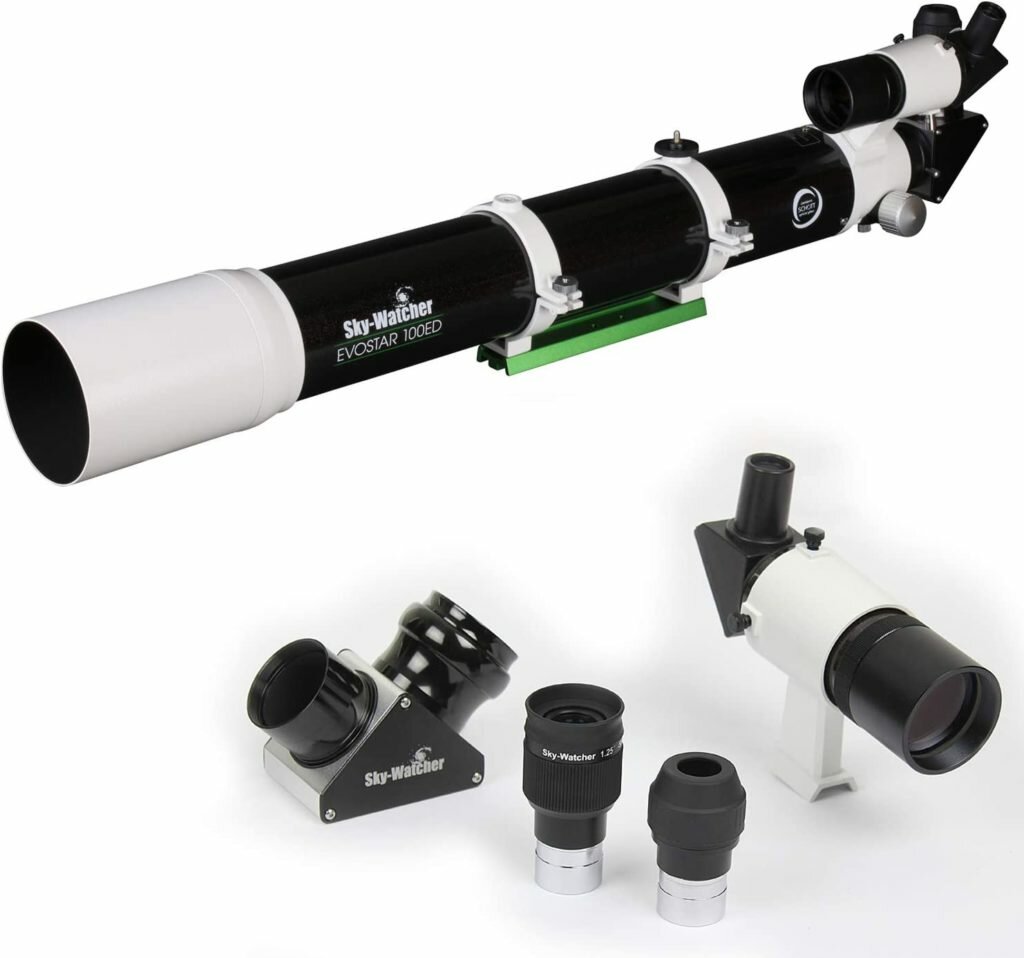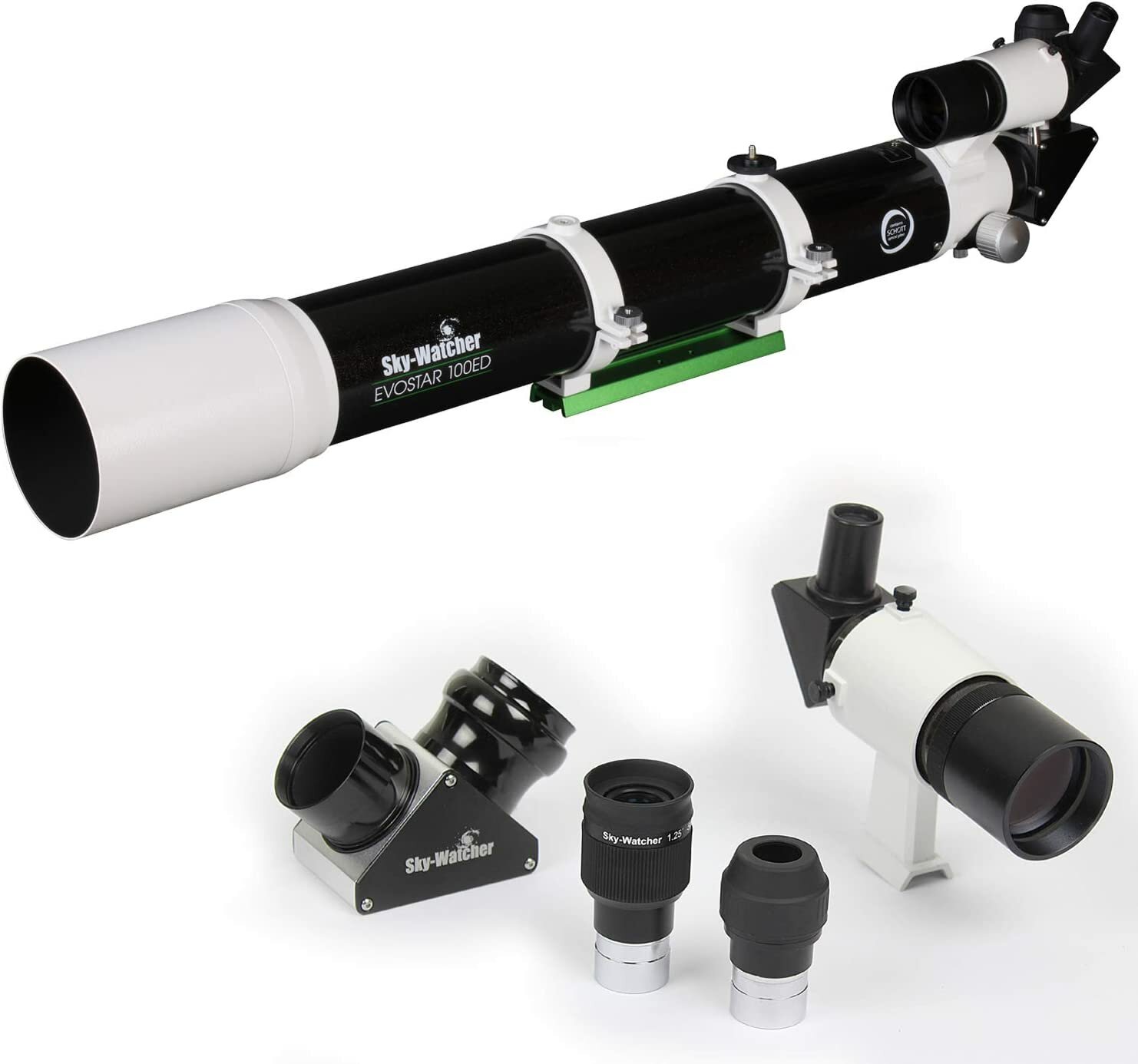Best telescope for use at home - Even a good pair of binoculars cannot compare to the ways that the best telescopes can expand your view of the night sky. When you use a telescope on a clear, dark night, you may see some interesting deep-sky phenomena up close, such as star clusters, nebulae, and galaxies, while also getting beautiful views of the planets and the moon. Although the images returned from the Hubble Space Telescope won't exactly match what you see, there is still something wonderful about witnessing these things in person.
Thankfully, you don't need a huge amount to purchase best telescope for home use. More expensive telescopes with superior mounts and optics are becoming more accessible. Additionally, computerized mounts and smartphone applications are democratizing amateur astronomy. However, there are still a lot of subpar telescopes available, especially at the lower price points, so it's important to do your research before buying.
Sky-Watcher EvoStar 100 - Best telescope for use at home


The EvoStar is the ideal telescope for astrophotography's due to its big aperture, strong magnification, and simple focuser.
A 100 millimetre (4-inch) aperture, a 900 millimetre focal length, and a maximum magnification of 197x are all attributes of this dual-element refractor.
Sky-Watcher’s MHTC coating is applied to the optical class of the EvoStar to reduce chromatic aberrations and aid in the delivery of tack-sharp, color-corrected images. The dual-speed Crayford-style focuser, that let's you to swiftly find focus irrespective of the eyepiece or camera you are using, completes the EvoStar's photo-friendly features.
The EvoStar 100 telescope simply includes an optical tube assembly; a mount and tripod are not included. The Skymax does, however, come with a Vixen-style dovetail plate, allowing you to mount it on almost any telescope mount.
The EvoStar 100 includes a finderscope, a dielectric diagonal, and a foam-lined aluminium box in place of a tripod.
Pros:
- 100 mm refractor OTA
- Metallic High-Transmission Coatings (MHTC) that are proprietary reduce chromatic aberrations
- Comes with a 2 inch double Crayford focuser
- Includes an aluminum hard case with foam lining
Cons:
- Doesn’t come with mount or tripod
Gskyer AZ90600


The Gskyer AZ90600 telescope is a fantastic overall value because it has more features and extras than any other kit of a comparable price.
It's quite difficult to find any other telescope kit that provides as much value for your money as the Gskyer AZ90600. This refractor telescope has three interchangeable 5 mm, 10 mm, and 25 millimetre eyepieces, a 90 millimetre (3.5 inch) aperture, a 600 millimetre (23.6 inch) focal length, and a maximum magnification of 120x. The anti-reflection completely coated blue film elements of the Gskyer AZ90600 enhance light transmission and guarantee clear, sharp pictures.
Along with the three interchangeable eyepieces stated above, the Gskyer AZ90600 also includes a full-size alt-azimuth aluminium tripod and a 3x Barlow lens that increases the magnification power of each eyepiece by three times.
The Gskyer AZ90600's easy setup and immediate use round out the vast list of great features it offers. Because of this telescope's modest weight, you may quickly transfer it to a new location if you don't like your existing setup for stargazing.
Pros:
- 90 mm refractor OTA
- Anti-reflective blue film optical parts that are fully coated
- Comes with 3 removable eyepieces (24x, 60x, and 120x)
- Easy to set up and use
Cons:
- Doesn’t come with a carrying case
Do you need to spend a huge amount of money on a good telescope?
No, not always. You can get a beginning telescope for under £100 if you shop wisely, do your homework, and have reasonable expectations. Although Jupiter and Saturn won't be visible up close, you will still be able to see them well, along with other brighter celestial objects.
That ought to be plenty to spark enthusiasm in astronomy and make the work seem extremely worthwhile. Beginner-level telescopes can be found for more than £1,000, but you must consider carefully whether the cost is justified. It might be wiser to start out with a reliable midrange scope on a GoTo mount and then upgrade once you've used it to the fullest. That can require some time.
Do you need to consider the aperture when choosing a telescope?
The aperture size is an important consideration when picking a telescope. The main lens or mirror's aperture determines how much light the telescope can gather, which in turn determines how many objects and how much detail you can view.
The main benefit of reflector telescopes is that larger mirrors are significantly simpler and less expensive to produce than larger lenses. In most circumstances, a reflector with a 114 millimetre mirror will provide you with greater views of a wider variety of celestial objects than a refractor with an 80 millimetre objective lens.
